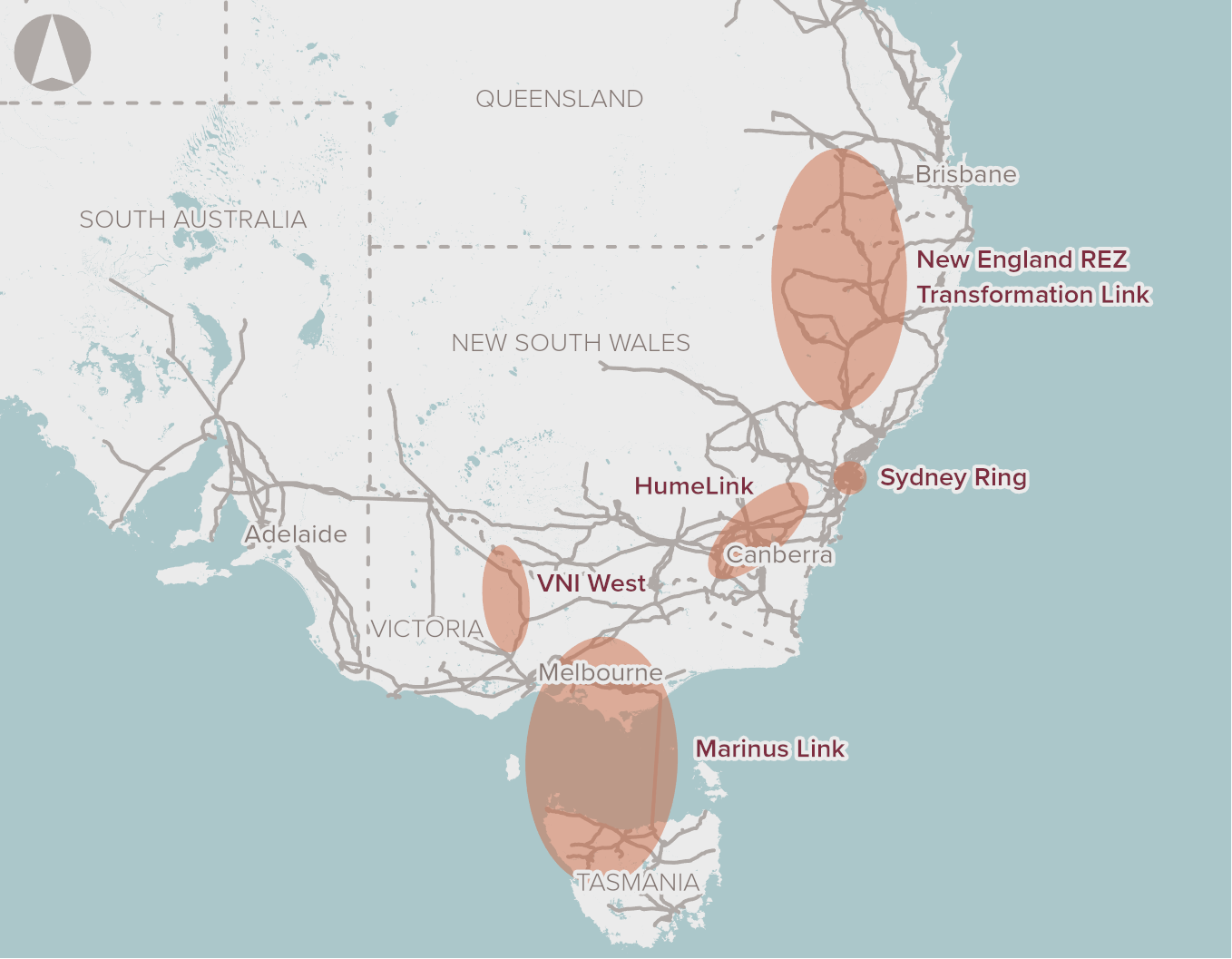

The National Electricity Market (NEM) is undergoing a once-in-a-lifetime transition from thermal generation to renewables (such as wind and solar), complemented by firming generation (such as pumped hydro). By 2035, significant investment will be needed in renewable and firming generation and associated transmission to continue providing affordable, reliable and secure energy for users.
In the most likely Step Change scenario, the 2022 Integrated System Plan (ISP) forecasts the need for over 125 GW of additional Variable Renewable Energy by 2050, to meet demand as coal-fired generation withdraws.
During this transition, the NEM will need to deliver greater volumes of generated and stored energy to meet changing patterns of consumer demand, balance intermittency, and increase system reliability and resilience by transmitting energy across and within regions. The Australian Energy Market Operator (AEMO), which operates the NEM, released the 2022 ISP in June 2022
The ISP was first released in 2018 and formed part of the evidence base for this proposal.
Near-term optimisation of the NEM is also identified as a proposal on the Infrastructure Priority List.
The 2022 ISP Update provides an actionable roadmap to guide governments, industry and consumers on investments needed for an affordable, secure and reliable energy future. The proposed proposal is to provide increased transfer capacity between regions and improve network access to energy storage locations and renewable energy sources. This includes:
- new and increased transfer capacity between Queensland, New South Wales, Victoria, and Tasmania
- network access between energy storage locations and major load centres
- network access to renewable energy sources.
Actionable network investments in the optimal development path include:
- HumeLink - new 500kV transmission line which will connect Wagga Wagga, Bannaby and Maragle
- Sydney Ring - southern and Hunter Transmission Project transmission infrastructure
- New England REZ Transmission Link - new network infrastructure to enable new generation and storage in New England
- Marinus Link - a proposed electricity and telecommunications interconnector between Tasmania and Victoria
- VNI West - is a proposed new high capacity 500 kilovolt (kV) double-circuit overhead transmission line between Victoria and New South Wales
These potential medium and longer term investments are subject to change as the ISP is updated to reflect the dynamic nature of the power system and evolving technologies.
The investments and their timing will also be subject to regulatory assessment and any other processes required by governments.
The NEM is a wholesale market that connects generators and retailers across the six eastern and southern states and territories in Australia. Western Australia and the Northern Territory are not connected to the NEM.
The Australian Energy Market Commission (AEMC) develops the rules by which the market must operate. The Australian Energy Regulator (AER) enforces the rules and makes judgements on the regulatory proposals of monopoly network operators.
As AEMO handles the day-to-day operations of the electricity and gas markets, we encourage them to continue to work with AEMC, AER, Energy Security Board, government and private sector asset owners and operators to identify options for future connectivity and reliability of energy supplied via the NEM.


 EVALUATION COMPLETE
EVALUATION COMPLETE




